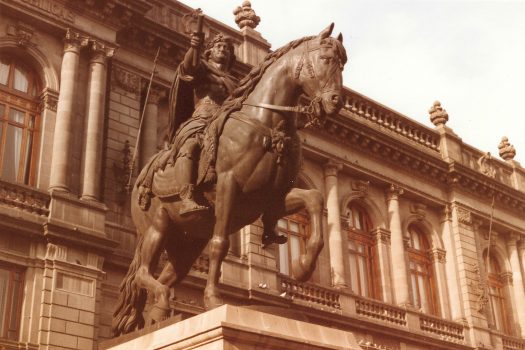The pedestal for the statue was inaugurated in 1796 on the main plaza of Mexico City (the Plaza de la Constitución, or Zocalo) with large and well-attended parties and bullfights. A temporary statue, representing the Spanish king, constructed out of wood and gilded stucco, was placed on top of the pedestal. The statue itself was placed and inaugurated, again with celebrations and bullfights, in 1803. The famous Baron Alexander von Humboldt, present at the unveiling, stated that in his opinion the statue produced by Tolsá was second only to the equestrian statue of Marcus Aurelius, in Rome. In 1821, Mexicans, striving for independence threatened to melt the monument down to reuse the bronze for guns or coins. The mark of an Aztec quiver underneath one of the hooves, interpreted, as a sign of allegiance to Spain, did not help in these circumstances. Fortunately the statue was saved on the merit of its aesthetic qualities and relocated in 1822 to a safe place. Even today, in response to the earlier controversy surrounding the statue, the plaque on the pedestal indicates that Mexico conserved the statue as a monument to art, and not as a sign of praise to a Spanish king.
Mexicans call the statue of Charles IV ‘El Caballito’ (the little horse), thereby neglecting the royal rider.






